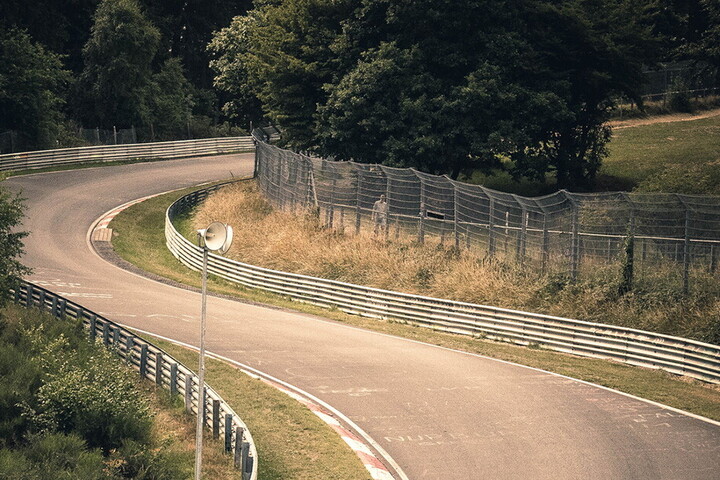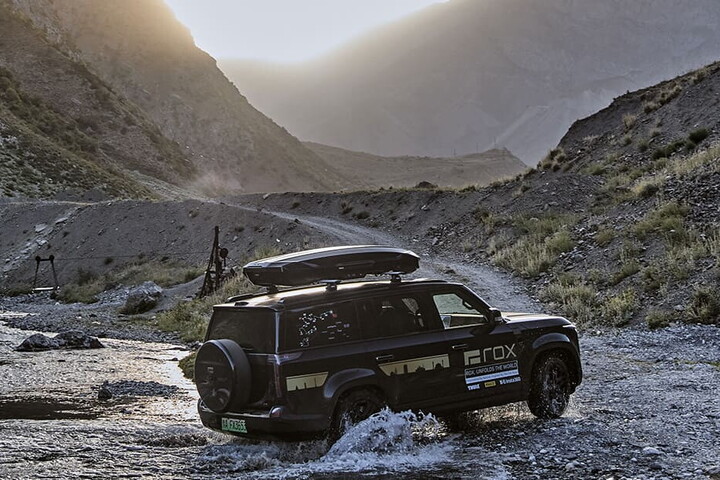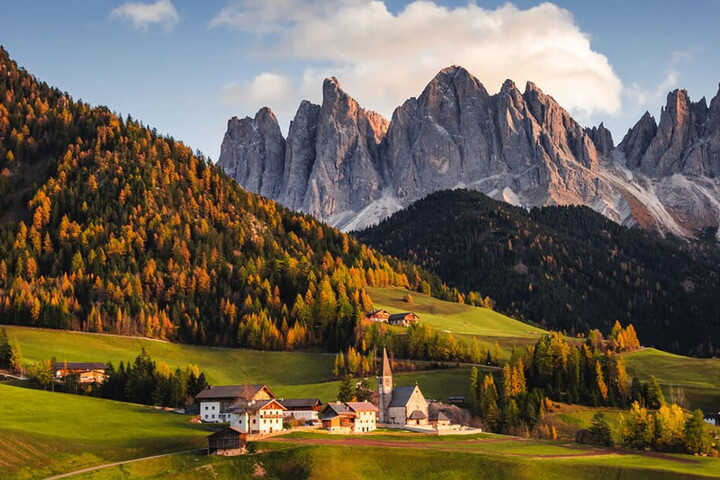In the heart of Germany's Eifel region, the Nürburgring is far more than just a circuit: it is a symbol of motorsport and the passion for performance driving. Born from an ambitious project in 1925 and inaugurated on 18 June 1927, the original track stretched over 22 km, with demanding corners and extreme elevation changes that immediately made it a severe challenge for drivers and constructors alike.
Today, the Nürburgring is composed of two main sections: the historic Nordschleife (20.8 km) and the more modern GP-Strecke (4.5 km), which opened in 1984. Its most iconic section, the Nordschleife, is widely considered the most difficult and fascinating track ever built. Jackie Stewart famously nicknamed it the “Green Hell” after tackling its dangers in the rain back in the 1960s.
In the 1930s, dominating the Nordschleife meant entering the elite of the "Ringmeisters," alongside legendary names such as Rudolf Caracciola, Tazio Nuvolari, and Bernd Rosemeyer. After World War II, the Nürburgring regained prominence by hosting the German Formula 1 Grand Prix from 1951, until Niki Lauda's tragic accident in 1976 marked the end of the F1 era on the old track. Since then, the circuit has continued to host major endurance races, such as the 24 Hours of Nürburgring, and serve as a proving ground for car manufacturers, becoming the absolute benchmark for the development of sports cars and supercars.

10 fascinating facts about the Nürburgring Nordschleife
1. Staggering length: The Nordschleife measures 20.832 km and officially includes 73 corners (though many drivers count over 150, including minor bends). Due to its sheer size, which spans the territory of three different municipalities, it is common to experience sunshine in one section and rain in another on the same lap.
2. The village on the track: the village of Nürburg, with the Mediaeval castle that gives the circuit its name, is located inside the original layout. During races, residents were effectively “surrounded” by the cars.
3. The Karussell: the circuit's most famous banked corner, which originated from a gravel short-cut used by drivers in the 1930s, is now one of the Nordschleife's defining features.
4. The birth of the Silver Arrows (1934): Before a race, having exceeded the maximum weight allowed by regulations, Mercedes-Benz scraped the white paint off their cars, leaving the bare metal. This gave birth to the legendary "Silberpfeile" (Silver Arrows).
5. Stefan Bellof's perfect lap (1983): he set a record time of 6:11.13 in a Porsche 956 during qualifying for the 1000 km race, a time that remained unbeaten for 35 years.
6. The slowest lap: in 1954, an Opel Blitz truck took over 30 minutes to complete the track during an endurance test.
7. Tazio Nuvolari (1935): He won the German GP in an inferior Alfa Romeo against the powerful Mercedes and Auto Union cars, in one of the most epic feats in motoring history.
8. Sabine Schmitz, the Queen of the Ring: the German driver who won the Nürburgring 24 Hours twice and completed over 30,000 laps of the circuit, becoming a beloved fan icon. It was said she could drive the track blindfolded.
9. One lap equals thousands of kilometres: a single lap on the Nordschleife is equivalent to approximately 20,000 km of road testing for mechanical and thermal stress. This is another reason why it remains a benchmark for car manufacturers today.
10. Not just a track: underneath the circuit is a network of tunnels used for various services and technical access. There was - or rather, there is - also an amusement park that was only open for four days. The structures were later demolished, with only the inactive roller coaster remaining.
The Nürburgring as a development laboratory
Today, the Nordschleife is far more than a circuit: it is a dynamic research centre for car manufacturers. Its over 170 corners, elevation changes of up to 300 metres, and variable weather conditions allow every aspect of a vehicle to be tested: suspension, brakes, aerodynamics, electronics, and tyres. A lap of the Ring is worth thousands of kilometres of road testing, thanks to its unique combination of high speed, slow corners, and rough sections.
This is why brands like Porsche, BMW, Audi, Mercedes-AMG, and many others have established their development centres here, making the Nürburgring a global benchmark for performance.
Pirelli's record-breaking achievements: excellence on the Green Hell
The circuit is also the go-to place for setting new records. Since 2019, road cars equipped with Pirelli tyres have conquered an average of more than one record per year across various categories: from sports compacts and SUVs to electric supercars. The P Zero family is the undisputed star, especially in specialised versions like the P Zero Trofeo RS, designed to bring racing technology to the road.
Among the most recent records:
• Xiaomi SU7 Ultra (2025) equipped with P Zero Trofeo RS: A time of 7:04.957 made it the fastest production electric car on the Ring.
• Audi RS 3 (2024) with P Zero Trofeo R: a time of 7:33.123, setting a new record for compact cars and beating the previous reference by over 5 seconds.
• Audi RS Q8 Performance (2024) with P Zero: 7:36.698, the fastest production SUV on the track.
• Hyundai Ioniq 5 N (2024) with P Zero Corsa: a lap in 7:45.59, confirming performance even for electric crossovers.
• Porsche Taycan Turbo GT (2023) with P Zero Trofeo RS: 7:07.55, the best time for a production electric car, thanks to Pirelli Elect technology.
• Porsche Cayenne Turbo GT (2021) with P Zero Corsa: record in the SUV category.




